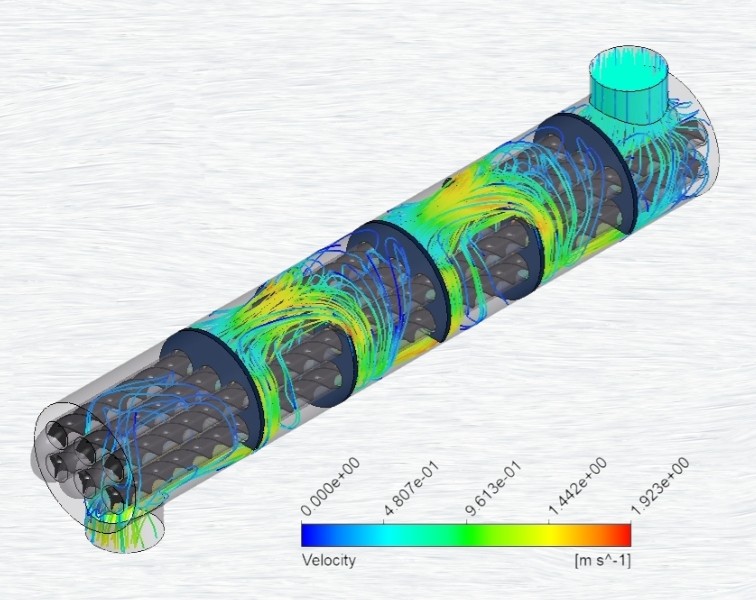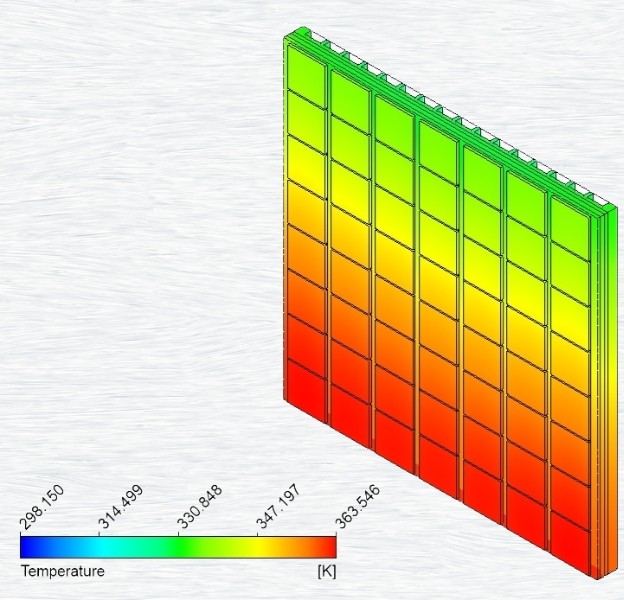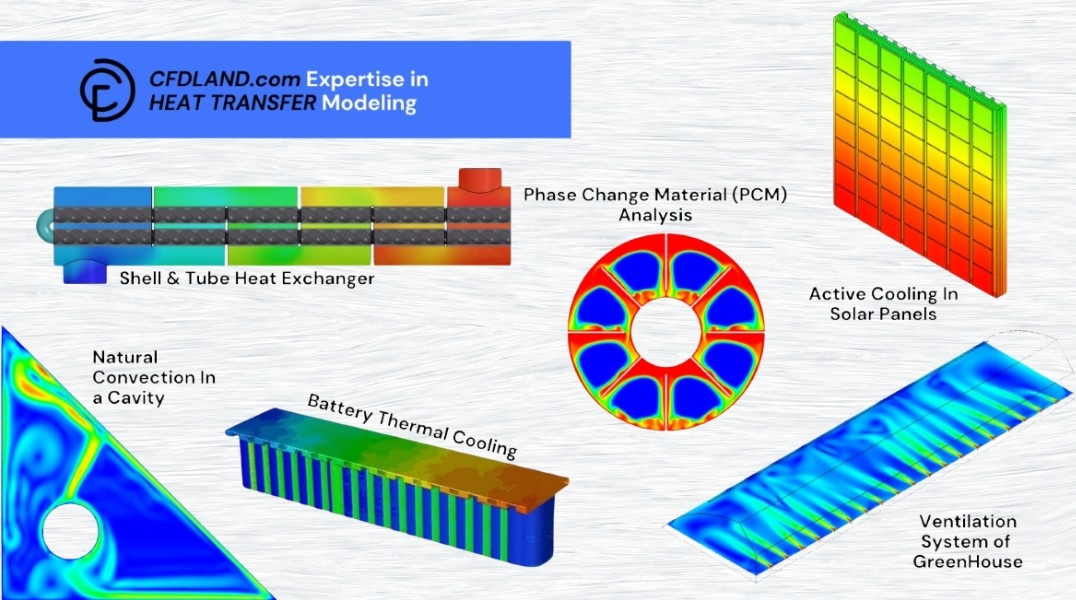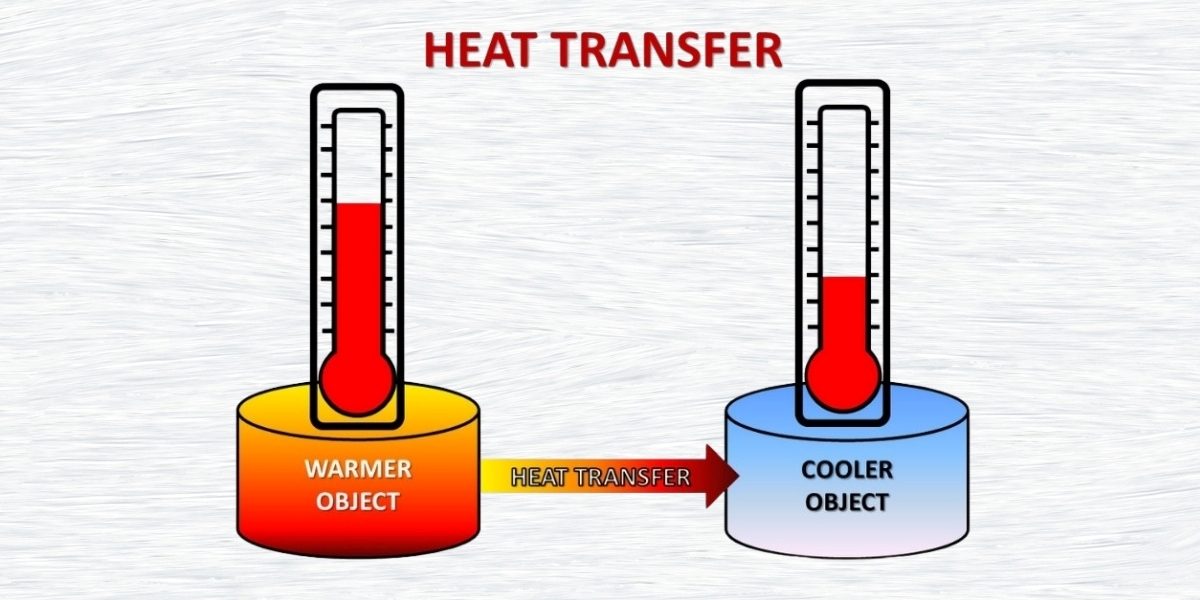By: James Brown
Modern engineering faces increasingly complex thermal challenges. Understanding thermal behavior is often considered fundamental for successful engineering design, from compact microprocessors that generate significant amounts of heat in tiny spaces to large-scale industrial systems requiring precise temperature control. CFD Heat Transfer has emerged as a widely adopted methodology for addressing these challenges during the design phase, often before manufacturing begins.
Understanding Heat Transfer Fundamentals through CFD
Heat transfer refers to the movement of thermal energy from warmer to cooler areas. This physical process follows thermodynamic principles, where energy flows naturally until thermal equilibrium is achieved. Traditional analytical methods can sometimes struggle with complex geometries and associated physics, which modern Computational Fluid Dynamics (CFD) Heat Transfer modeling aims to address effectively. The fundamental heat transfer equation is linked to the Energy Conservation Equation, which CFD solves numerically over thousands or millions of discrete cells. This computational approach can reveal temperature distributions and heat flux patterns that may be difficult to visualize using conventional techniques.
Heat Transfer Mechanisms
Conduction: Heat Transfer Through Materials
Conduction Heat Transfer Simulation analyzes thermal energy transfer through materials without mass movement. In other words, heat travels within a material, such as a solid. This form of heat transfer can also occur in fluids. Thermal energy is transferred from one particle to another through vibration and particle interaction. CFD Thermal Modeling is particularly effective at simulating conduction in complex geometries with varying material properties.
Convection: Fluid-Driven Heat Movement
Convection is the transfer of heat within a medium, particularly fluids. It involves two main mechanisms: conduction and advection, which is heat transfer by the movement of fluid mass. These mechanisms work together to produce fluid convection. The physics becomes particularly interesting in Natural Convection scenarios, where fluid movement is driven by density differences caused by temperature variations. The Boussinesq Approximation offers a practical modeling approach for many natural convection problems, simplifying calculations while maintaining accuracy for moderate temperature changes. Forced convection, on the other hand, is characterized by externally driven fluid flow via fans, pumps, or other factors. Advanced CFD software incorporates extensive turbulence models to represent the complex fluid dynamics affecting convective heat transfer rates in various applications.
Radiation: Electromagnetic Heat Transfer
Radiative Heat Transfer Modeling captures thermal energy movement via electromagnetic waves without the need for intervening materials. At the atomic level, protons and electrons vibrate and emit electromagnetic waves. When these waves interact with particles from another material, they generate vibrations and raise the material’s temperature. This process plays a significant role in high-temperature applications, space thermal analysis, and solar engineering. Advanced radiation models account for surface properties, geometric view factors, and participating media effects, all of which are often necessary for realistic high-temperature process simulation.
Advanced Thermal Modeling Approaches
Conjugate Heat Transfer
Conjugate Heat Transfer (CHT) is widely regarded as one of the most important advancements in thermal simulation methods. Rather than handling solids and fluids separately, CHT models heat movement across multiple domains simultaneously, capturing interactions at material interfaces. This method is particularly useful for studying heat exchangers, electronics cooling solutions, and engine thermal management systems.

Phase Change and Multiphysics Considerations
Complex thermal scenarios often involve phase changes that absorb or release significant amounts of energy. Boiling Heat Transfer is one such phenomenon that typically requires advanced Multiphase Heat Transfer CFD models to accurately simulate bubble formation, growth, and departure, as well as associated heat transfer enhancements. Similarly, condensation processes often demand sophisticated modeling techniques, which CFDLAND experts have successfully applied in various industrial applications.
Many thermal systems operate under changing conditions over time, making Transient Thermal Analysis essential for understanding temperature progression during startup, operational changes, or shutdown procedures. These simulations can reveal critical temporal aspects of thermal behavior that steady-state analysis might overlook, particularly for systems operating periodically or under cyclic loading.
Applications Transformed by CFD Thermal Analysis
Thermal challenges in modern engineering are complex and span multiple industries. CFD Heat Transfer simulation has demonstrated significant value in various applications, including:
- Electronics Cooling CFD for addressing device miniaturization challenges.
- Heat Sink Optimization CFD to enhance cooling efficiency in confined spaces.
- HVAC CFD Simulation and Building Thermal Simulation for improving climate control efficiency.
- Heat Exchanger Design CFD for optimizing industrial processes.
- Data Center Thermal Analysis and Data Center Cooling Systems planning.
- Battery Thermal Management CFD for ensuring electric vehicle safety and performance.

ANSYS Fluent: Industry-Leading Thermal Analysis Capabilities
ANSYS Fluent’s Heat Transfer capabilities are widely recognized for their performance in thermal simulation. The software’s architecture offers several advantages for tackling complex thermal challenges, including accurate estimation of critical parameters such as the Heat Transfer Coefficient across complex geometries and flow regimes. Fluent’s comprehensive modeling environment provides:
- Multi-physics integration enabling seamless coupling between fluid flow and heat transfer.
- Advanced turbulence models capturing subtle flow features affecting thermal performance.
- Robust mesh adaptation focusing computational resources where thermal gradients demand resolution.
- Validated material models accounting for temperature-dependent properties
- Specialized solvers optimized for transient thermal phenomena and conjugate heat transfer.
- Industry-specific modeling capabilities addressing specialized thermal challenges.
CFDLAND engineers possess extensive expertise in ANSYS Fluent simulations, from problem formulation to post-processing and interpretation. This specialized knowledge helps ensure that simulation methodologies are tailored to both the underlying physical processes and specific project objectives.

The CFDLAND Difference: Precision Engineering in Thermal Analysis
High-quality thermal simulation requires not only software expertise but also a rigorous methodological approach and validation knowledge. CFDLAND’s scientific methodology emphasizes:
- Deep physical understanding before computational processing.
- Strategic simplification that preserves fundamental physics while reducing computational costs.
- Thorough mesh development focused on critical thermal gradient regions.
- Systematic validation against known benchmark cases.
Structured CFD courses on CFDLAND.com cover all aspects of Heat Transfer Simulation, helping organizations build their own simulation expertise. These comprehensive lessons range from basic conduction analysis to advanced multiphase thermal modeling, using carefully selected examples to build skills in a structured manner.
Companies facing complex CFD Heat Transfer projects or urgent thermal engineering challenges can benefit from CFDLAND’s expertise. Our engineering team has successfully completed hundreds of thermal simulations for a wide range of objectives, providing accurate results that have supported critical decision-making from initial concept development to final design stages.
For specialized guidance on your thermal engineering challenges, visit www.CFDLAND.com to explore our complete range of simulation services and educational resources.
Published by Joseph T.

















